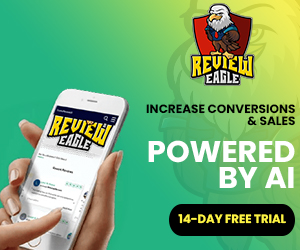We are constantly bombarded with advertisements. Whether we're scrolling through our social media feeds, browsing our favorite online stores, or simply reading an article, ads seem to follow us everywhere we go.
Ad retargeting, also known as remarketing, is a clever marketing strategy that has revolutionized the way businesses approach online advertising. It's like having a virtual salesperson who never gives up on trying to win you over. You may have experienced it yourself – you're casually browsing the internet, checking out a pair of stylish sneakers, and then suddenly, those very sneakers start popping up everywhere you go.
In this blog post, we will dive deep into the world of ad retargeting and uncover the secrets behind its effectiveness. We'll explore how it tracks your browsing behaviors, follows you around the internet, and ultimately persuades you to make a purchase. But don't worry, we'll also discuss the ethics and privacy concerns surrounding this powerful marketing tool.
Join us on this journey as we unravel the complexities behind ad retargeting and discover why it has become a game-changer for businesses worldwide. Whether you're a curious consumer or a business owner looking to boost your marketing efforts, this blog post will provide valuable insights and actionable tips to help you harness the power of ad retargeting. So, get ready to step into the fascinating world of online advertising and see firsthand how browsing can turn into buying with the magic of ad retargeting.
The Basics of Ad Retargeting
Ad retargeting is a powerful marketing technique that allows businesses to target and engage with potential customers who have previously shown interest in their products or services. It works by placing a small piece of code, known as a pixel, on a website. This pixel tracks the browsing behavior of visitors and enables businesses to display targeted ads to those individuals as they continue to browse the internet.
One of the key benefits of ad retargeting is its ability to keep your brand top-of-mind for potential customers. By displaying relevant ads to users who have already shown interest in your offerings, you can increase brand awareness and encourage them to take action. Research has shown that retargeted ads have higher click-through rates and conversion rates compared to regular display ads.
To get started with ad retargeting, you need to define your target audience and create custom audiences based on specific criteria. This could include people who have visited certain pages on your website, added items to their shopping cart but didn't complete the purchase, or even those who have engaged with your social media content. By segmenting your audience and tailoring your ads accordingly, you can deliver personalized messages that resonate with each individual's interests and needs.
When implementing an ad retargeting campaign, it's important to carefully consider the frequency and timing of your ads. Bombarding users with too many ads can be overwhelming and may lead to ad fatigue or annoyance. On the other hand, showing too few ads may not be enough to keep your brand top-of-mind. Finding the right balance is crucial for maintaining engagement without overwhelming potential customers.
How Ad Retargeting Tracks Your Browsing Behavior
Ad retargeting relies on tracking technologies such as cookies or pixels to monitor users' browsing behavior across different websites. When a user visits a website that has the retargeting pixel installed, the pixel drops a cookie onto their browser. This cookie then allows the ad network or platform to identify the users and serve them with relevant ads as they navigate through other websites within the network.
It's important to note that ad retargeting is based on anonymous data and does not collect personally identifiable information (PII) unless explicitly provided by the user. The purpose of tracking browsing behavior is to understand users' interests and preferences, not to invade their privacy.
Retargeting pixels can track various actions, such as page visits, product views, or cart abandonment. This data is then used to create custom audiences and deliver targeted ads based on users' specific interactions with your website or online content.
Creating Custom Audiences for Ad Retargeting
Creating custom audiences is a crucial step in maximizing the effectiveness of your ad retargeting campaigns. By segmenting your audience based on their behaviors and interests, you can deliver highly personalized ads that resonate with each individual's needs.
There are several ways to create custom audiences for ad retargeting:
- Website Visitors: Target users who have visited specific pages on your website or have taken certain actions, such as adding items to their cart but not completing the purchase.Email Subscribers: Upload your email list and target those subscribers with tailored ads.Social Media Engagers: Retarget users who have engaged with your social media content, such as liking or commenting on posts.Lookalike Audiences: Create audiences that share similar characteristics with your existing customers or website visitors. This allows you to expand your reach and target new potential customers who are likely to be interested in your offerings.
By leveraging these custom audiences, you can deliver highly relevant ads that are more likely to capture users' attention and drive them toward making a purchase or taking the desired action.
Best Practices for Implementing Ad Retargeting Campaigns
While ad retargeting can be a powerful marketing tool, it's important to follow best practices to ensure its effectiveness and maintain a positive user experience. Here are some tips for implementing successful ad retargeting campaigns:
- Set Clear Goals: Define your objectives and key performance indicators (KPIs) before launching your campaign. Whether it's increasing sales, driving website traffic, or boosting brand awareness, having clear goals will help you measure the success of your retargeting efforts.Create Compelling Ads: Design visually appealing and engaging ads that capture users' attention. Use persuasive copywriting techniques and highlight the unique value proposition of your products or services.A/B Test Your Ads: Experiment with different ad formats, visuals, and messaging to identify what resonates best with your audience. Continuously monitor the performance of your ads and optimize them based on the results.Optimize Landing Pages: Ensure that the landing pages users are directed to after clicking on your ads align with their expectations. Optimize these pages for conversions by including clear call-to-action buttons, relevant information, and a seamless user experience.Maintain Frequency Caps: Avoid bombarding users with excessive ad impressions. Set frequency caps to limit the number of times an individual sees your ads within a specific period.Monitor and Analyze Results: Regularly analyze the performance of your ad retargeting campaigns. Track key metrics such as click-through rates, conversion rates, and return on ad spend (ROAS). Use this data to make informed decisions and optimize your campaigns for better results.
By following these best practices, you can maximize the effectiveness of your ad retargeting campaigns and drive better results for your business.
Ad retargeting is a powerful marketing strategy that allows businesses to engage with potential customers who have shown interest in their products or services. By tracking users' browsing behavior and delivering personalized ads, businesses can increase brand awareness, drive conversions, and ultimately boost their bottom line. However, it's important to implement ad retargeting ethically and respect users' privacy concerns. By following best practices and providing value to your audience, you can harness the power of ad retargeting to turn browsing into buying.
The AI Web Agency is dedicated to helping our clients grow their business. Growth is the DNA and foundation of our focus in everything we provide to our clients. The AI Web Agency offers marketing services that make our client's phones ring, their websites fill with visitors, and keeps their existing clients engaged. We deliver this growth both online and offline, to local businesses and national brands. We leverage the power of AI to provide precision personalized content delivered via Email, Web, and Social Media to help businesses grow.









